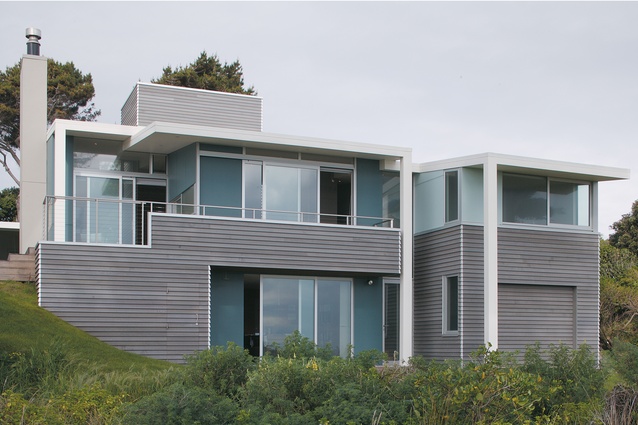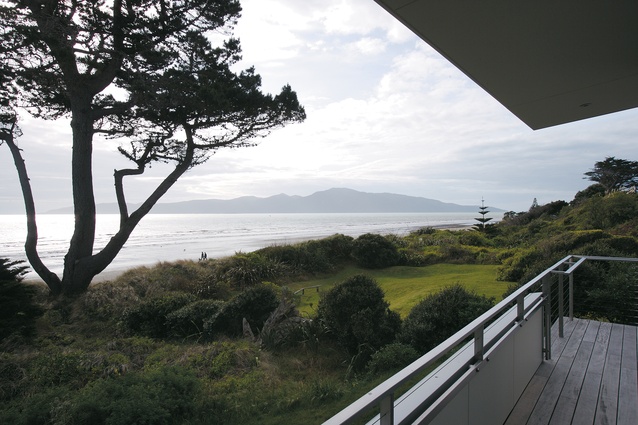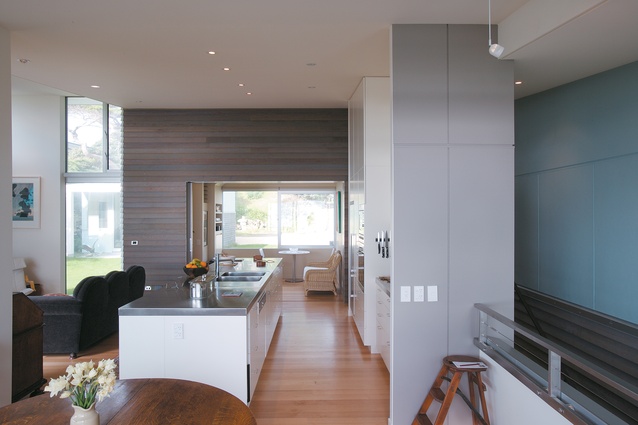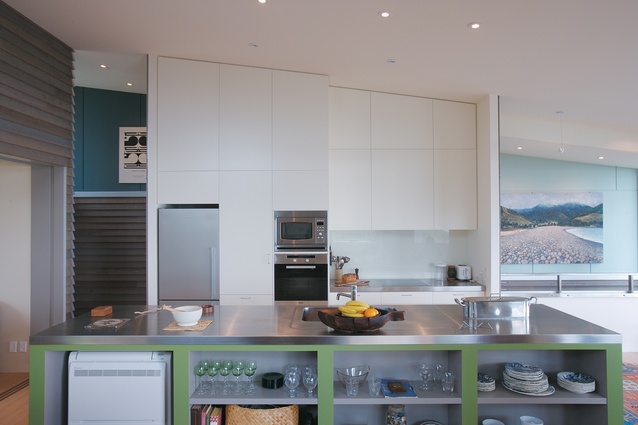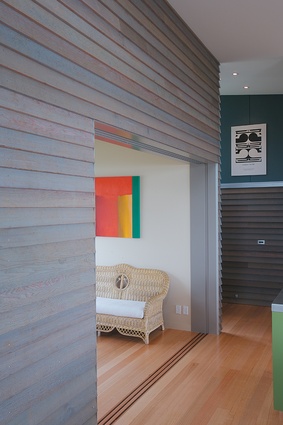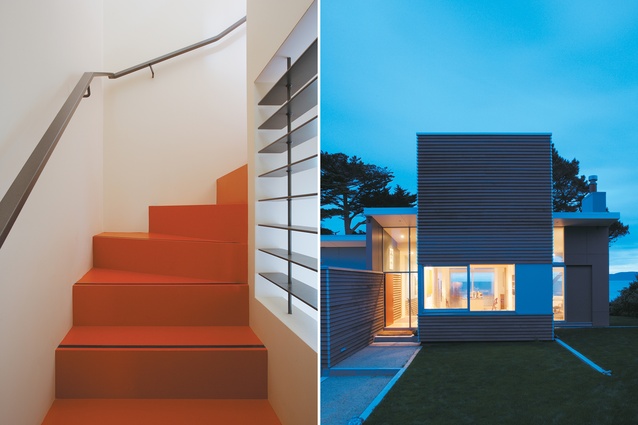Houses Revisited: Big little
An economy of planning and a luxury of volume characterise this Gerald Parsonson bach at Raumati, first published in 2007.
Raumati, the first settlement heading north from Wellington after MacKays Crossing, is the Sleepy Hollow of the Kapiti Coast. The road runs along above the beach, where dunes shudder, roll and fall into the sea. Gnarly macrocarpas stand like sentinels, hang like vultures, provide shelter from the wind and then rage with it when it really blows. The baches here are some of the oldest in the district, predating Paraparaumu, Coastlands and the modern exposed ‘sunshine coast’ they represent.
Baches at Raumati stay in families for generations, or are the shared property of fast friends. Such was the cottage owned by clients of Parsonson Architects. With retirement approaching, the clients bought out their friends, sold the cottage (lifted over the dunes and carried away to a new life in Paekakariki) and planned a new house on the land they loved.
The site, at the end of a quiet lane, falls away from the hill, westward to the sea. Gerald Parsonson found the spot on the ridge of a small hillock, a moment of pause before the dunes dropped away, high enough to soak up the sun and the view, and set back enough to avoid the worst of the weather.
Approaching from the east, the house seems insubstantial and transparent. It is hard to get a fix on the form with an elevation that appears, initially, flat and thin. At the left, the driveway drops to a garage below. Alongside, a tall, almost double-height, glazed entry is overwhelmed by a higher tower. From this vantage, this is a vertical house; cedar weatherboards stained a light grey soften the height.
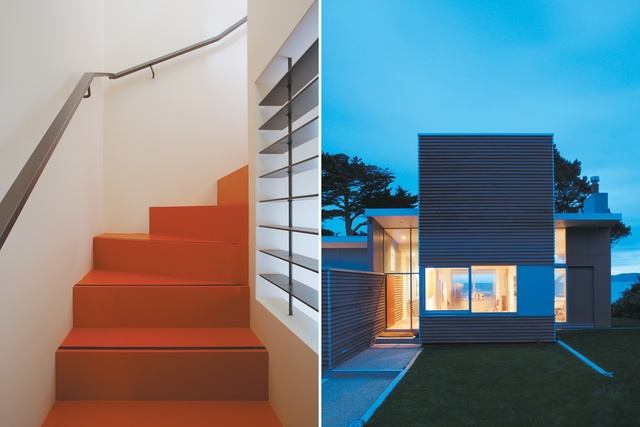
Inside, the entrance splits into three. To the left, discreetly, are the bathroom and the bedroom. Directly ahead, a stair drops down to the ground below, lined internally with the same cedar that graces the exterior. To the right is the main room of the house, a simple volume that incorporates so much. To the south is the kitchen with a long central island. This is no dinky, magazine, Alessi lemon-squeezer holder but the organising element of the whole room. Or rooms, for within this volume are four distinct spaces that owe their identity to this bench. It is a commanding presence (the command centre). To the west, towards the sea is the dining room with a window seat; to the north is the living room; in the east, facing the lawn outside the entry, is a small morning room, light and airy; finally, it is also the kitchen, the heart of this house.
A stair in the dayroom winds up to a study that looks out to the sea through a couple of towering macrocarpas. Large sliding windows make the view direct and accessible. Where other beach houses lift their roofs to the sky and open out to the sea, this house reverses the move, angling its roof down to the dunes below. Large windows still offer up the view but the roof form serves to enclose the space instead of blowing it apart. Indeed, the volume created by the high sloping roof is the making of the room and also of the house. A flat ceiling – or a lower one – would have limited the space, even killed it. These rooms join together, not at floor level, but in the air they share above. It is a masterful volume, generous but not extravagant.
The living room is defined by the wall with the fireplace, high bookshelves and low speakers. Windows are placed for the view and also to capture light at different times of the day. The room is further defined by a subtle shift in the ceiling plane. This can be better understood from the beach where the house reveals itself as three sloping forms and a tower. The roof over the bedroom extends forward and down with a square leg dropping from its front corner, creating an L-shaped frame (and housing the downpipe).
The stairway creates its own channel before the dining room picks up the earlier language with a frame of its own. The living room end repeats this a third time. This complex collection of roofs (and decks) is in contrast to the formal verticality of the entrance at the other side of the house. The house, organised upon arrival, breaks down and dissolves, tumbling into the dunes.
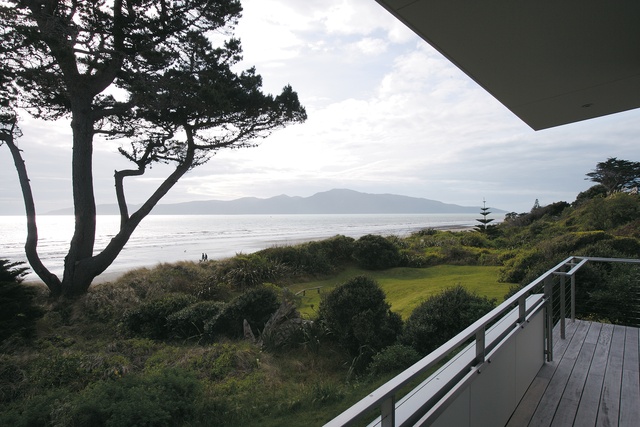
The garage shares the lower level with a room that is now study and poolroom but could easily be a bedroom. A bathroom hides behind the back wall. The walls here are of concrete block, in part a reference to the utilitarian nature of baches, but mostly to comply with the requirement in the coastal erosion zone that the house may be removed in the event that the beach wins the battle of the tide. If and when this time arrives, the top of the house can be cut from its moorings and removed with the concrete base left to become part of the beach.
The decks off the main room are nautical in nature – the deck off the dining room is narrow like a ship’s bridge. The landscaping around the base of the house is subtly organised on the entrance side. Here, the lawn is bounded and held by a low concrete edging that allows the house to ‘float’. On the beach side the house disappears into the grass, firm in its roots. A guesthouse lurks furtively uphill – a junior version of the main house. Perhaps a little busy in its execution, it nevertheless serves a useful purpose, forming a courtyard space with its master. Without this structure, the house could seem too exposed.
This simple house embraces an economy of planning and a luxury of volume. It is transparent when it can be and enclosing when it needs to be. An island, floating in parts and elsewhere grounded, it is a quiet study of what it means to relax by the sea.
Click here to see more Houses Revisited. And sign up to our email newsletters to receive Houses Revisited straight to your inbox.

